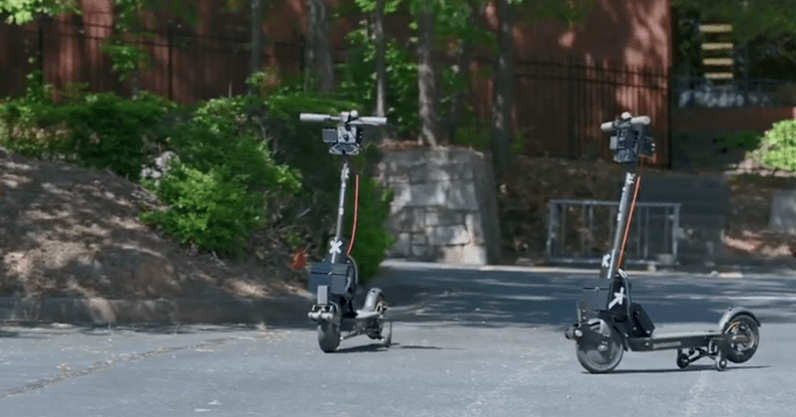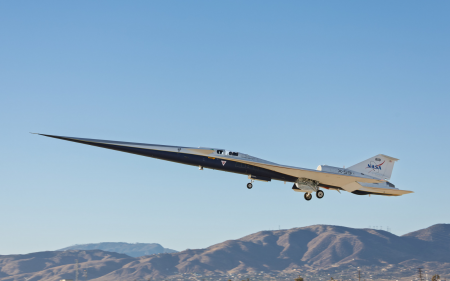The astronauts are safe in space at the ISS
 If you’re even moderately interested in spaceflight, you were probs sitting stuck to your screen on Saturday evening watching the SpaceX crewed mission launch to the ISS. You bet the whole Stuff team were fixated on that launch, which is the first crewed mission to space on American soil since 2011. Yesterday, astronauts Robert Behnken and Douglas Hurley successfully disembarked the SpaceX Crew Dragon capsule and entered the International Space Station. SpaceX’s Crew Dragon spacecraft docked at the space station yesterday after launching from Florida’s Kennedy Space Center Saturday and travelling 19 hours through space. After making initial contact with the ISS, Crew Dragon went through a series of steps to further link the spacecraft with the port. This included linking power and creating an air-locked seal before the first of two hatches were opened. The astronauts will stay onboard the space station for one to three months, or for a maximum of 110 days.
If you’re even moderately interested in spaceflight, you were probs sitting stuck to your screen on Saturday evening watching the SpaceX crewed mission launch to the ISS. You bet the whole Stuff team were fixated on that launch, which is the first crewed mission to space on American soil since 2011. Yesterday, astronauts Robert Behnken and Douglas Hurley successfully disembarked the SpaceX Crew Dragon capsule and entered the International Space Station. SpaceX’s Crew Dragon spacecraft docked at the space station yesterday after launching from Florida’s Kennedy Space Center Saturday and travelling 19 hours through space. After making initial contact with the ISS, Crew Dragon went through a series of steps to further link the spacecraft with the port. This included linking power and creating an air-locked seal before the first of two hatches were opened. The astronauts will stay onboard the space station for one to three months, or for a maximum of 110 days.
To dock, the spacecraft made a careful approach to the space station and then made a “soft capture”. This allowed Crew Dragon to make its first physical contact with the docking port at the International Space Station. Crew Dragon then did something called a “hard capture,” which involved using 12 latches to create an air-locked seal between the Drago’s crew cabin and the entrance to the space station. We wish the astronauts a lovely time away from the corona-infested Earth before they make their way back.
Sauce: The New York Times
SpaceX then blew up a Starship prototype
 Yes, this is the fourth prototype SpaceX has blown up by accident. This, just before the first successful manned launch of the Crew Dragon/Falcon 9 combo over the weekend. “SpaceX’s next-generation Starship rocket exploded right after a test at the company’s South Texas test site on Friday,” The Verge details. The explosion commenced after SpaceX ignited the engine on the test rocket, which was followed by a massive fireball that engulfed the vehicle in flames. Apparently very little actual hardware remained after the flames calmed down, but it also left the test site with a substantial amount of damage. The unrelated test happened a day before the historic launch for NASA that sent two astronauts to the International Space Station. But in this case, the Falcon 9 rocket has already had close to 100 successful flights. So the astronauts were in good hands, as we know now.
Yes, this is the fourth prototype SpaceX has blown up by accident. This, just before the first successful manned launch of the Crew Dragon/Falcon 9 combo over the weekend. “SpaceX’s next-generation Starship rocket exploded right after a test at the company’s South Texas test site on Friday,” The Verge details. The explosion commenced after SpaceX ignited the engine on the test rocket, which was followed by a massive fireball that engulfed the vehicle in flames. Apparently very little actual hardware remained after the flames calmed down, but it also left the test site with a substantial amount of damage. The unrelated test happened a day before the historic launch for NASA that sent two astronauts to the International Space Station. But in this case, the Falcon 9 rocket has already had close to 100 successful flights. So the astronauts were in good hands, as we know now.
The prototype that exploded was meant as a test for SpaceX’s future Starship design and had nothing to do with the Falcom 9 launch. These will be used to send people to deeper space like the moon and Mars and wasn’t designed for orbit-level missions. It’s safe to say that we won’t be going to Mars with a Starship soon, especially considering the Starship is not ready for human use. “With this latest failure, it seems unlikely that anything is salvageable, and there seems to be some damage to the area surrounding the test site, too. It’s unclear if anyone was hurt in the explosion,” according to The Verge.
Sauce: The Verge
These autonomous scooters will return to its base after use
 Forget self-driving four-wheelers like cars, we’re at a point where even two-wheelers can think for themselves. Well, kinda. Tortoise and Go X have announced a pilot program that will bring semi-autonomous electric scooters to a town called Peachtree Corners in Georgia, US. These aren’t your run-of-the-mill e-scooters, as these buggers can literally balance and drive themselves back to base. The pilot programme will work through a ‘Hail my Scooter’ smartphone app that will allow people to summon an electric scooter to their location. This, friends, is the future we’re living in. Where you can call a scooter to your location, use it, and have it return to wherever it came from.
Forget self-driving four-wheelers like cars, we’re at a point where even two-wheelers can think for themselves. Well, kinda. Tortoise and Go X have announced a pilot program that will bring semi-autonomous electric scooters to a town called Peachtree Corners in Georgia, US. These aren’t your run-of-the-mill e-scooters, as these buggers can literally balance and drive themselves back to base. The pilot programme will work through a ‘Hail my Scooter’ smartphone app that will allow people to summon an electric scooter to their location. This, friends, is the future we’re living in. Where you can call a scooter to your location, use it, and have it return to wherever it came from.
That is revolutionary in its own right, as it’ll help human mobility in the way Uber and ride-hailing does, but without the eco-impact on our planet. The two companies are currently running the pilot in the Georgia town with 100 scooters to see how the public picks up the alternative commuting platform. Interestingly, it turns out the scooters aren’t as autonomous you might think and are actually being piloted by remote teleoperators. The area called Peachtree Corners has passed legislation mandating that all shared micro-mobility devices (you know, like public e-scooters) that are deployed should be able to reposition itself autonomously. This is mainly to increase the accessibility of transport, while also avoiding sidewalk clutter — a major hazard with other scooter-sharing programs. To comply with current COVID-19 guidelines, each scooter is even thoroughly disinfected after being repositioned to a home base and every Go X Apollo employee is required to pass a daily COVID-19 health check. That’s how you do it, folks.
Sauce: TNW
Waaaay more people are listening to podcasts than ever before
 We all love a good story. And, in recent years, podcasts have given voices to people who want to tell stories but didn’t have access to a seat at a radio station. Podcasts took the world by storm, and these days they are even more accessible than normal FM radio stations. You can use a smartphone or laptop to easily listen to some bro ranting about politics or comic books. It’s become… popular. Podcasting platform Stitcher has announced that the number of podcasts have grown by 129,000% in the last ten years. No, there are no extra zeroes there.
We all love a good story. And, in recent years, podcasts have given voices to people who want to tell stories but didn’t have access to a seat at a radio station. Podcasts took the world by storm, and these days they are even more accessible than normal FM radio stations. You can use a smartphone or laptop to easily listen to some bro ranting about politics or comic books. It’s become… popular. Podcasting platform Stitcher has announced that the number of podcasts have grown by 129,000% in the last ten years. No, there are no extra zeroes there.
That’s some impressive growth. In the annual podcasting report published by the same platform, it is clear that podcasters published around 7 million episodes in 2019, compared to 350,000 episodes published in 2010. Interestingly, episode length has declined though, going down a total of 2.4 minutes, which loosely aligns with how much shorter our attention spans are these days. We have to keep things short and sweet to hold on to your attention, now don’t we? “The report has some interesting tidbits about genres (true crime being the #1), formats, listening habits, and age group of listeners. I wish the study covered the topic of podfasters — people who listen to podcasts at more than 1x speed,” TNW reports.
Sauce: TNW




